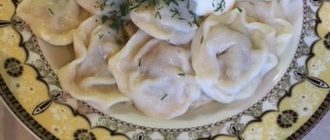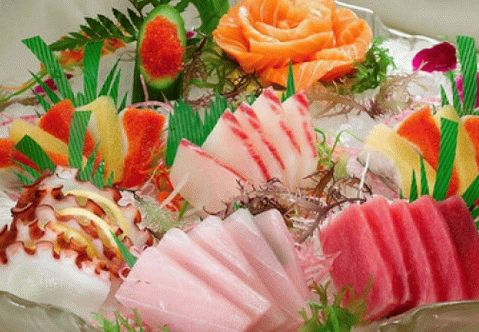
Japanese cuisine is called very simple, as it is presented a small selection of products and a very simple way of cooking dishes.
As a rule, Japanese dishes cannot be prepared without:
- rice;
- fish;
- seafood;
- some types of beans and vegetables.
In the modern world, Japanese cuisine is considered mysterious and exotic, so sushi bars have gained such popularity for to the whole world. This is due to the peculiarity of cooking, as well as with their submission. Usually sushi bars prepare orders in front of customers. As for Japanese restaurants, here before visitors can cook fish that has just been caught from pool.
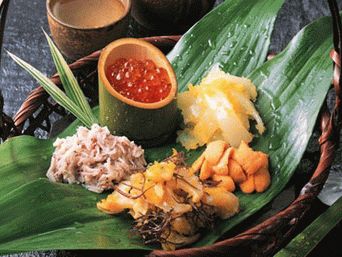
Features of the cuisine of Japan
Sushi is considered the most popular Japanese dish. At the beginning sushi was food for people who were not able to buy something except fish. Raw fish was placed under a stone press and poured with salt. She began to wander, and after some time the fish could be eaten. But now everything is different, because sushi called delicacies, especially because of their high cost in Japanese restaurants. In any institution they offer several dozens of varieties of this dish, differing in their fillings. For example, white or colored rice, shrimp, octopuses, salmon and so on. There are also sushi with vegetables, avocados or cucumbers.
No type of sushi can be served without rice, which is being prepared according to a special recipe and without adding salt. Rice must stay with with its natural taste, but at the same time, it also absorbs taste the quality of the filling. Another important component of land is seaweed nori.
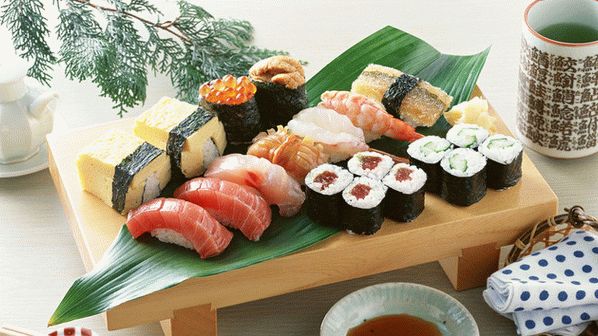
Sushi should be served on special wooden supports, on which mustard mustard and pickled ginger. Some people are not particularly familiar with Japanese traditions, so when visiting sushi bar, these pink petals they consider decoration. But actually in fact, they are consumed between receptions of sushi, since they interrupt taste of previous dishes.
In addition, visitors to Japanese restaurants may experience problems using hashi sticks. If you can’t eat with chopsticks, it’s allowed to use hands, because it’s allowed by Japanese etiquette. But only men have such a right, and women are forced to master the art of eating with using sticks.
Japanese etiquette has special rules that apply to Hashi. They are not placed on the table, but used for this purpose a special stand. Hashi are located directly in front of the dish, and their sharp end is on the left side. Chopsticks not only send food by mouth, but also divide it into small pieces. You can’t pierce food with chopsticks or wrap them around noodles.
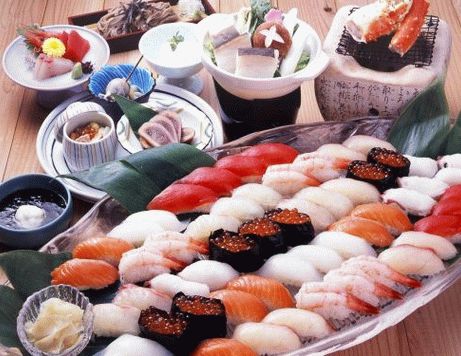
Japanese cuisine is presented not only sushi, but also the first dishes, salads with seafood, rice and caviar. Rice wide used in the preparation of dough for pies, which are called norimaki or mochi. In addition, Japanese dishes use pasta, or rather long white noodles. When serving the first course the Japanese first drink all the liquid from the plate, and then eat all that remains in the dishes. The same applies to salads and rice.
Japanese cuisine is characterized by such a feature as the presence of minimum amount of animal food. Of course, such dishes can meet on the menu of Japanese restaurants, but this is an exception from the rules. When serving meat is difficult to recognize, because it’s good seasoned. For cooking, do not use animal fat, he replaced with vegetable oil or fish oil.
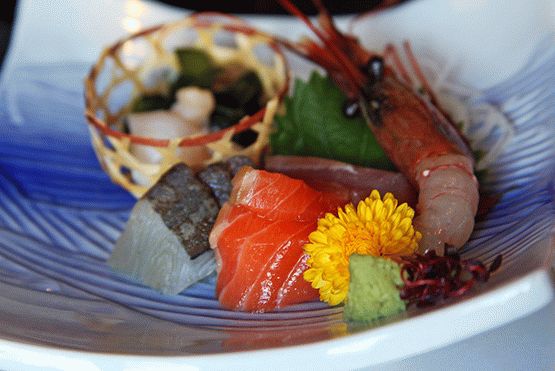
Russian sushi bars serve Japanese dishes along with imported or domestic beer drinks. Less Plum wine or sake, which implied by a Japanese meal. That’s only in Russia take root such a tradition as drinking green tea. His insist on jasmine or ginseng, and served in a heavy copper kettle. Drink such a drink is best from small cups.
Also, for tea ceremonies, sometimes ceramic the dishes. Of course, it does not have a spectacular appearance, but maintains tea temperature much better. Most importantly, on there was no empty dishes on the table. According to Japanese etiquette, neighbors in the table should watch each other’s cups so that they do not empty. If you do not want to drink tea anymore, then the dishes should be turned upside down bottom up. This rule applies to alcohol.
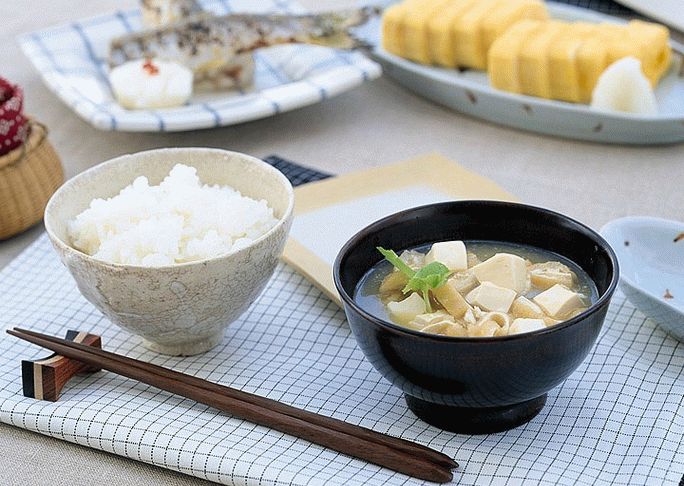
Japanese traditions
An important component of Japanese etiquette and cuisine is considered not only table setting, but also the rules of behavior during meals. it due to the fact that thanks to special rituals the whole the national cuisine of the Japanese people received such attractiveness.
When setting the table, it is necessary to alternate round and square the dishes. It should be dark, because when serving dishes from white rice they become even more appetizing. Every kind of food It is recommended to serve in a specific dish. For example, for sushi use a wooden stand; for a fried dish – a wooden a tray for salads and soups – bowls, and noodles can be served in a bowl with a cap.
Lids perform two functions at once, that is, they support the temperature of the dish and help a person increase a sense of appetite. Everything dishes should be served at the same time, but also try them all at once. Before starting the main meal, you need to small amounts to taste all other dishes. Not necessary fear that the dish will become cold. By tradition, all Japanese food should have room temperature, but this does not apply to rice and soup.
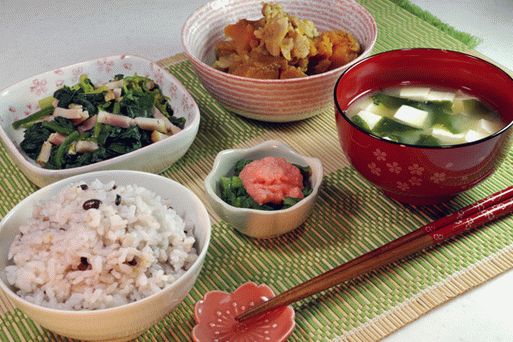
The basis of Japanese cuisine is oriental wisdom, respect to natural perfection and pristine appearance of all products. Every Japanese chef tries not to change what is considered perfect. These are fish, vegetables and rice.
Depending on the time of year, Japanese restaurants serve different sets of dishes. This feature distinguishes Japanese cuisine from all the rest. Here are just a division of food by season connected before all with the fact that any food should always be fresh. So thus, on Japanese tables are never various supplies since winter.
The Japanese have great respect for the seasons of the year, therefore sometimes they even decorate their dishes with leaves or flowers. True, in recent years, dishes are less and less decorated with flowers. In If there are flowers in the room for eating, then from food decorations completely refuse.
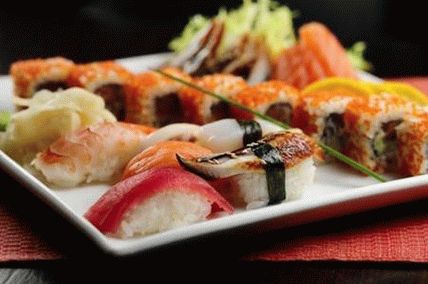
The Japanese people are characterized by such a feature as moderation in everything. This is what allows them to serve food like this. in portions so that a person is satisfied, but at the same time he could not overeat. The wide variety of dishes served is also taken into account. the number of which can sometimes reach several tens. Therefore, in people not particularly familiar with Japanese traditions may appear the feeling that this is not a dinner, but a tasting.
The most important delicacy and legend of the cuisine of the Japanese people consider such a dish as fugusashi. For its preparation use famous puffer fish. Her poison can kill a person in a few seconds. As a rule, this occurs with improper preparation. fish. To avoid any unpleasant situations, the cook Japanese cuisine must be trained where they are demonstrated proper cooking fugusashi.
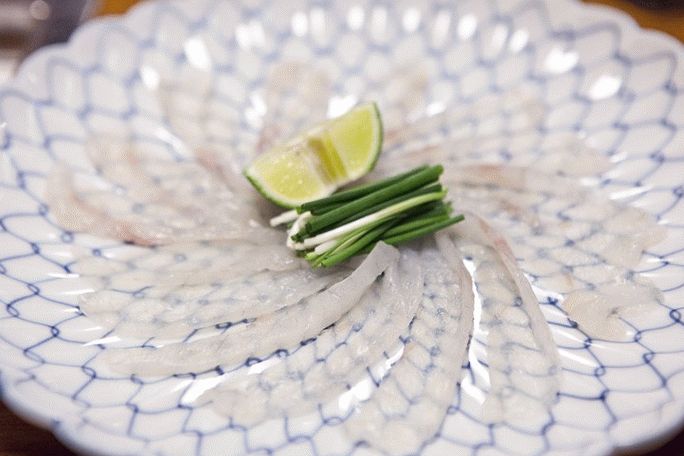
At the end of the course, licenses are issued. This dish has high cost, but despite this, the Japanese continue to actively order it. Every year, Japan’s population consumes large quantities of this poisonous puffer fish, and they do not stop the presence of a risk of being poisoned. In addition, all the insides of the fish and its scales also found their application, because they are added to “ zombie powder. ”
If the fish’s poison is used in the smallest quantity, then In humans, this can cause a state of euphoria. The cook is getting a true master in cooking puffer fish only after he will be able to make a dish and leave in it such an amount of poison that will not kill restaurant visitors, but, on the contrary, will deliver them pleasure.
Before the end of any holiday, there is always a desire taste something sweet. In Japanese cuisine, sweet foods have become appear recently. Long period of time their role performed nuts or fruits that were previously dried. In part Desserts on the cuisine of the Japanese people were greatly influenced by Europe. This is explained by the fact that biscuits made in Europe have become the main part of such a Japanese cake as dorjiki. Dessert consists of a pair of tortillas that are connected using a bean interlayers.
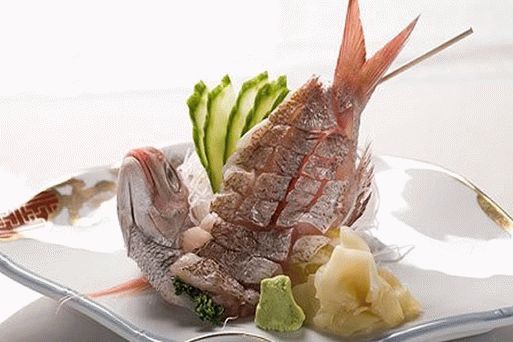
Also, any Japanese dessert is based on natural gelatin. or agar agar. It is used to make fruit marmalade and jelly cubes, which are then poured with sweet syrup. The traditional Japanese treat is fruit pickled in liquor and steeped in caramel. Japanese desserts don’t contain cream, chocolate or cream, which cannot be said about European sweets, where they prefer jam, fruit pasta or jelly.
Thus, Japanese cuisine can be called unusual, that is, the same as the country of the rising sun. Her existence based on a close relationship with nature, because on completely obeys its laws. Also the basis is the presence of harmony, thanks to which the Japanese have the longest duration life in the world. If you join the Japanese tradition of cooking and eating, then this will help you save health for a long time, and also make your body more strong, and the soul – rich.


